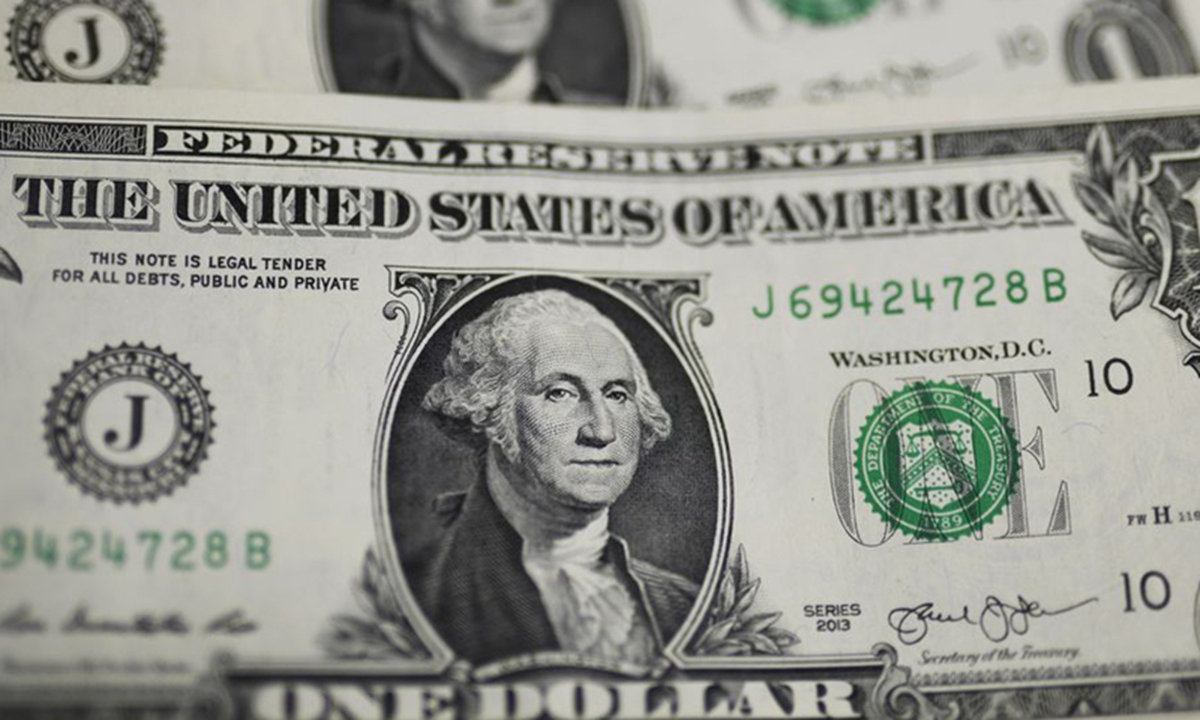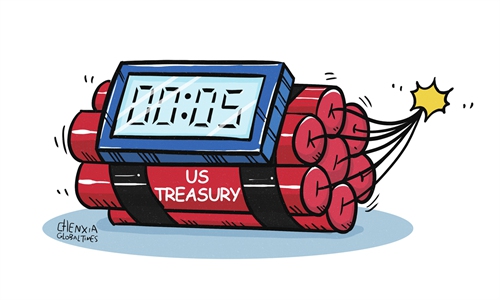
File photo:Xinhua
The world's two largest foreign holders of US treasuries, Japan and China, continued to pare down their holdings of US debt in December, data from the US Treasury Department showed on Wednesday.Foreign holdings of US treasuries declined in 2022. Japan's holdings also dropped by $224.5 billion specifically, while China's holdings were down by $173.2 billion to $867.1 billion, the lowest since May 2010.
For a long time, changes in China's holdings of US debt have been a topic of great concern, which is seen by some as a measure of the state of China-US relations. Yet, there is no need to complicate China-US relations with China's reduced holdings of US treasuries. The reasons behind China's recent reduction of its holdings of US debt are mainly economic considerations, as the problems in the US economy and the changes in bilateral economic and trade relations have increased the need for China to pursue diversification of its foreign exchange reserves.
To be clear, while China has reduced its holdings of US debt, it doesn't change the fact that US treasuries remain an important part of China's foreign exchange reserves. China is still the world's second-largest non-US holder of US treasuries, because the US dollar remains the world's most important currency for trade settlement and a safe-haven for investors seeking security amid the changeable markets. Besides, US sovereign debt has the highest and the most stable credit rating.
But nowadays these factors are changing. For starters, the size of US debt continues to hit new highs, increasing the possibility of default. The Congressional Budget Office on Wednesday said the US Treasury Department will exhaust its ability to pay all its bills sometime between July and September, unless the current $31.4 trillion cap on borrowing is raised or suspended. Yet, bipartisan standoff still appears to hinder efforts to address the debt limit issue. If the problem is not resolved in time, the US may face a catastrophic debt default that could even turn into a global financial crisis.
Second, the US Federal Reserve's monetary policy has also undermined the attractiveness of dollar assets to a certain extent. After the Fed's money printing led to soaring inflation, it adopted aggressive rate hikes. Against this backdrop, the interest costs on US debt are rising rapidly, exacerbating the risk of a collapse in the US high-yield bond market.
Third, China has huge foreign exchange reserves, which hit $3.18 trillion at the end of January, according to figures released by the State Administration of Foreign Exchange (SAFE). Dollar-denominated assets are an important part of the reserves. China could have used the dollars to buy many American products, including some electronic parts and high-tech goods, which could also be a good way of balancing bilateral trade and reducing trade deficit on the US side.
But now, in pursuit of the so-called global strategy aimed at ratcheting up pressure on China, the US has imposed an increasingly complex web of bans on high-tech exports to China. It aggressively promoted the tech "decoupling" from China by not only issuing export control bans cutting China off from certain semiconductor chips and technology, but also coercing the Netherlands and Japan to join the US in limiting exports of advanced chipmaking equipment to China.
As the choice to buy US products especially high value, high-tech products remains limited, it is also one of the reasons why US Treasury securities have been considered the most held foreign exchange reserve asset. It has also led to imbalance in China's foreign exchange reserves. With the growing risks of US treasuries, such imbalance could represent a significant risk exposure of China's foreign exchange reserves.
Therefore, from the perspective of improving the safety of China's overseas assets, it is an inevitable trend for China to adjust its overseas asset structure in the direction of more flexible and diversified allocation.



